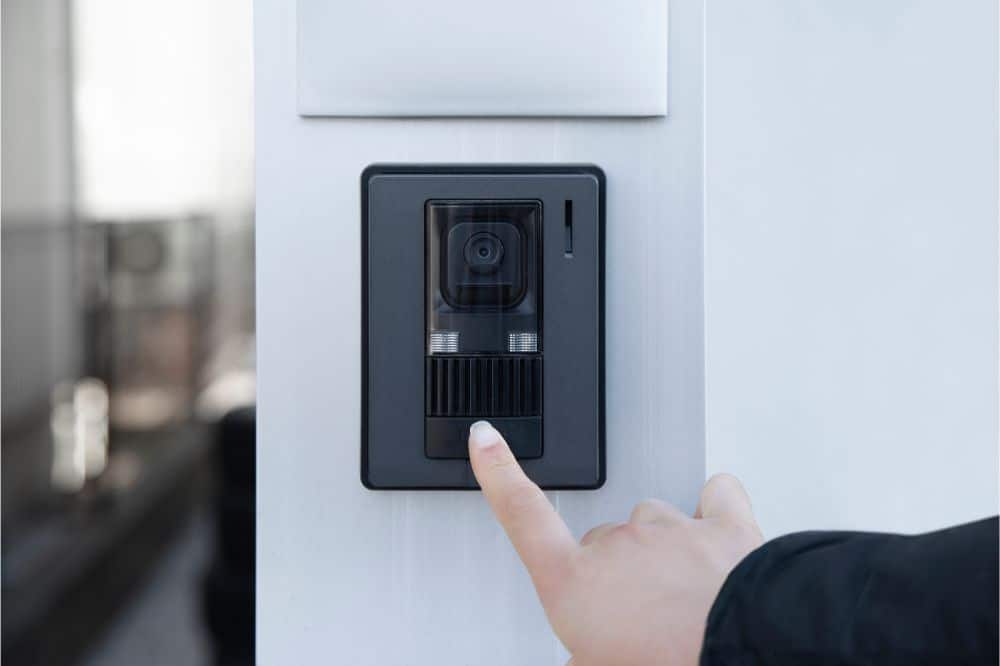Today, video doorbells have become an essential security feature for many homeowners, allowing them to monitor and communicate with visitors in real-time. However, not everyone has access to Wi-Fi or, in some cases, might be apprehensive about relying on Wi-Fi for their security system. In this article, we explore the world of video doorbells that don’t require a Wi-Fi connection, their features, and alternatives to traditional Wi-Fi-enabled devices. Let’s begin!
Table of Contents
Why look for video doorbells without Wi-Fi?
There are several reasons why someone might look for a video doorbell that doesn’t require Wi-Fi. One such reason is an unreliable internet connection, which can cause your video doorbell to not work properly, leaving your home vulnerable. Another reason could be privacy concerns, as some people may not want their doorbell connected to the internet and potentially be susceptible to hackers. Additionally, Wi-Fi-enabled devices could contribute to network congestion, creating slow speeds for other devices in your home.
Available video doorbells without Wi-Fi
While finding video doorbells that do not rely on Wi-Fi can be challenging, there are options available on the market. For example, the DoorBird D101S offers a network-connected doorbell that works through an Ethernet cable rather than Wi-Fi. While providing high-quality video and features like motion detection, you’ll need to run an Ethernet cable to your door for the DoorBird to function.
If you’re interested in a more traditional analog video doorbell, you can look into options like the SeqCam SEQ-8MA34, which uses a wired connection and doesn’t require any Wi-Fi or smart functionality. Keep in mind that these non-Wi-Fi doorbells might have limited features compared to their Wi-Fi counterparts.
If you’re open to considering non-Wi-Fi “smart” doorbells, there are products like the Arlo Audio Doorbell, which uses a hub instead of a direct Wi-Fi connection. By connecting to a hub, it cuts down on the security concerns often associated with Wi-Fi.
Non-Wi-Fi smart doorbells
While most smart doorbells require Wi-Fi to function effectively, there are a few models available that boast advanced features but don’t rely on Wi-Fi connectivity. These non-Wi-Fi smart doorbells might have Bluetooth capability, Z-Wave, or Zigbee protocols. Some of these doorbells come with an encrypted peer-to-peer connection that enhances security and enables direct communication with a smartphone or tablet without the need for a Wi-Fi network. By opting for doorbells with alternative connectivity methods, users can enjoy the convenience of a video doorbell without relying on Wi-Fi.
Analog doorbells
Analog doorbells are another option for those seeking a video doorbell without Wi-Fi. These traditional doorbells use wires to connect the camera to a monitor inside your home. With a simple push of a button, you can see who’s at your door without relying on internet connectivity. This option can provide a more secure and reliable experience.
Pros and cons of video doorbells without Wi-Fi
There are both pros and cons to consider when choosing a video doorbell that doesn’t require Wi-Fi. On the plus side, you can avoid potential connectivity issues, which can be unreliable or frustrating for some users. Non-Wi-Fi doorbells also provide an extra layer of privacy and security, as they are not vulnerable to hacking as Wi-Fi-dependent doorbells might be. However, there are some downsides to consider as well. Without Wi-Fi, you might miss out on some advanced features, such as remote access, notifications, and seamless integration with other smart home devices. Additionally, the installation process can be more complex and potentially costly, as it may require professional help or added equipment.
Pros
Among the advantages of video doorbells without Wi-Fi are enhanced security, privacy, and better resistance to hacking. Additionally, they are more reliable due to dependency on hardwired connections rather than on wireless signals, resulting in fewer instances of lag or downtime. Furthermore, because these doorbells aren’t reliant on an internet connection, they’re not affected by possible network disruptions or bandwidth usage concerns, ensuring constant coverage for your home’s safety at all times.
Cons
On the flip side, video doorbells without Wi-Fi often lack the convenience and advanced features provided by Wi-Fi-enabled options. They tend to have limited functionality, shorter range, and less compatibility with other smart home devices, often lacking cloud storage for video recordings as well. While these doorbells can offer increased security and privacy, they may not deliver the seamless experience many users have come to expect from smart doorbells.

Alternatives to Wi-Fi dependent video doorbells
If you’re not convinced by non-Wi-Fi doorbells, there are alternatives to video doorbells that depend solely on Wi-Fi. One option is wired video doorbell systems, which use physical connections for both data and power. Another option is cellular-based video doorbells that rely on your mobile network for data transmission. These options can provide the security and convenience you’re looking for while minimizing the reliance on Wi-Fi, giving you more flexibility in case of issues with your internet connection.
Wired video doorbell systems
Wired video doorbell systems offer another alternative to Wi-Fi dependent models. These systems require a direct connection to your home’s existing doorbell wiring, allowing them to function independently of Wi-Fi networks. This can be beneficial for individuals with poor internet connections, especially in rural areas. You can still access features such as live video streaming and two-way audio communication with wired systems, usually through a tablet or monitor installed within your home. Overall, wired video doorbell options provide a secure and reliable solution for those who prefer not to rely on Wi-Fi connections.
Cellular-based video doorbells
Cellular-based video doorbells are another alternative for those who prefer to avoid Wi-Fi dependency. These doorbells use cellular networks to transmit data and communicate with your smartphone. They offer greater flexibility, as they don’t require a nearby internet connection. However, these doorbells typically require a subscription plan for data usage, which can be an additional expense. A popular cellular doorbell option is the Ring Video Doorbell Elite, which offers various plans and packages to suit your needs.
Conclusion and Recommendations
While most video doorbells on the market rely on Wi-Fi connectivity to function effectively, there are alternatives available for those looking to avoid this requirement. Non-Wi-Fi smart doorbells, analog doorbells, wired video doorbell systems, and cellular-based video doorbells are options to consider depending on your specific needs and preferences.
When making a decision about which type of video doorbell to choose, consider factors such as cost, ease of installation, power source, and the quality of video and audio. Moreover, weigh the pros and cons of video doorbells without Wi-Fi to ensure that you are making the best decision for your specific situation.
Regardless of your selection, a video doorbell can enhance the security of your home, allowing you to monitor and control access to your property with confidence.

